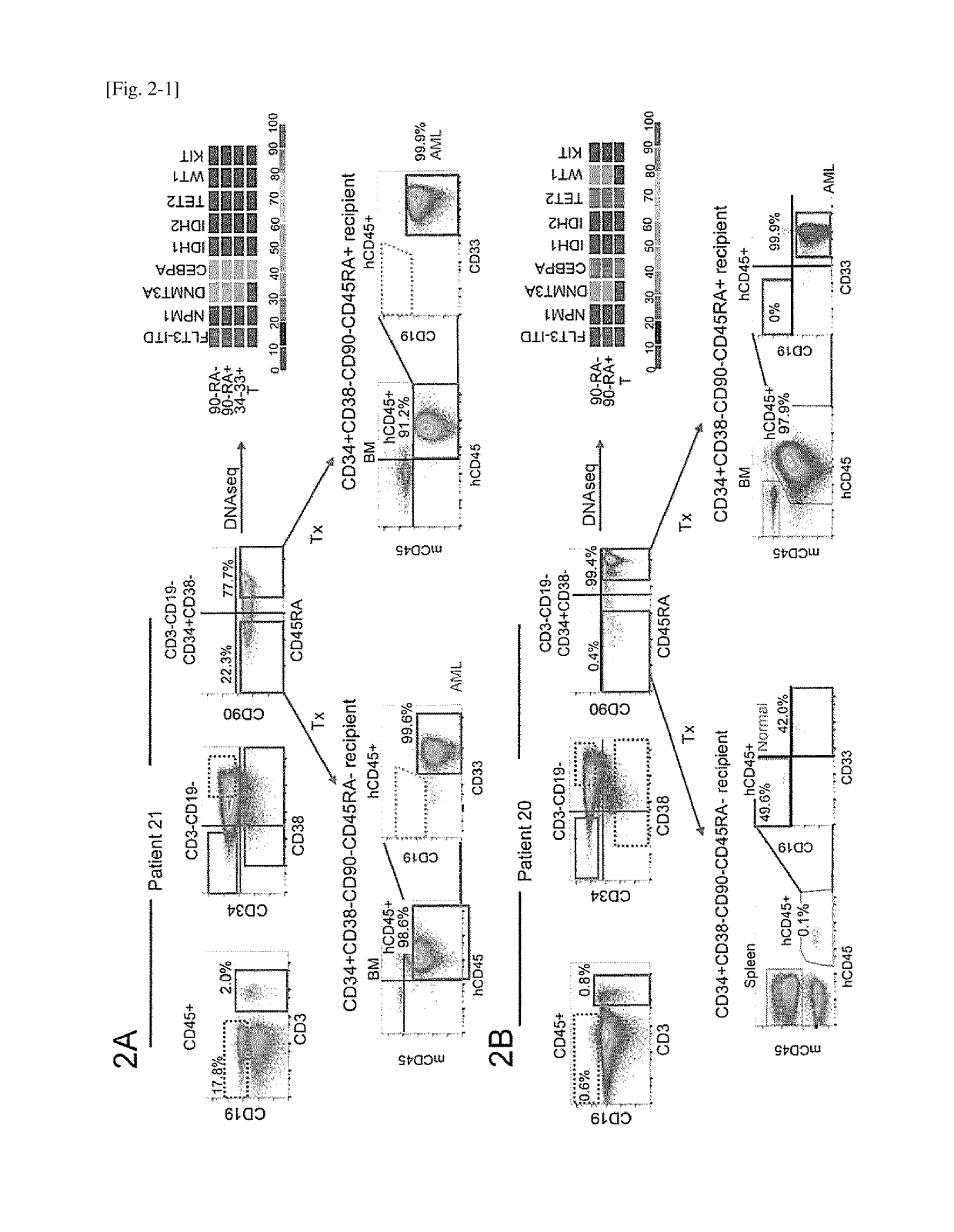A hck inhibitor and a bcl-2 inhibitor for treating acute myeloid leukemia
a myeloid leukemia and bcl-2 technology, applied in the field of compound, composition and method of treating leukemia, can solve the problems of not being able to identify cells destined to become malignant, not being able to overcome mutations sufficient for leukemogenesis, etc., to reduce aml in vivo, eliminate resistant aml, and reduce patient-to-patient heterogeneity and clonal diversity
- Summary
- Abstract
- Description
- Claims
- Application Information
AI Technical Summary
Benefits of technology
Problems solved by technology
Method used
Image
Examples
example 1
[0240]Evaluation of FLT3−ITD+leukemic subclones
[0241]Bone marrow (BM) or peripheral blood (PB) samples were obtained from 23 patients with FLT3−ITD+AML, whose diagnosis, clinical course and clinical outcomes are detailed in FIG. 7. The majority of patients had poor prognostic factors such as complex chromosomal abnormalities in addition to FLT3−ITD mutation and / or had known aggressive disease (induction failure, relapse after multiple stem cell transplantations).
[0242]To evaluate the contribution of AML-associated somatic mutations to leukemogenesis by linking mutations with in vivo function, the following experiments performed: 1) Population-level mutation screening in surface phenotype-defined hematopoietic cell subpopulations isolated from patients, 2) Functional assessment of the in vivo fates of those subpopulations by NSG xenotransplantation, and 3) Single cell sequencing to track patient-derived clones in xenotransplantation recipients (see, FIGS. 1A, 1B, and 1C).
[0243]In nor...
example 2
[0250]Effects of Kinase Inhibition on Human FLT3−ITD+AML Subclones with Diverse Mutations
[0251]These studies examined whether inhibition of a mutated kinase alone eliminates AML in vivo using a NSG PDX model. Patient-derived cells with a FLT3−ITD mutation engraft in vivo and initiate AML, but the individual FLT3−ITD+cells harbor multiple other mutations in various combinations. These mutations may contribute to therapy responsiveness in cooperation with FLT3−ITD, and a PDX model that reflects mutational complexity of human AML cells is necessary to examine the contribution of multiple co-existing mutations. Therefore, the frequency of AML-associated somatic mutations was evaluated in the disclosed PDX model using newborn NSG xenotransplantation, and the same sets of mutations were present in patient-derived leukemia-initiating population and engrafted AML cells in recipients (see, FIG. 4). Moreover, single cell sequencing demonstrated that the NSG PDX model allowed engraftment of mu...
example 3
[0254]Effect of Combined Inhibition of Kinase and Anti-Spoptosis Pathways on FLT3−ITD+AML Cells in Vivo
[0255]Recipients engrafted with AML from cases in which kinase inhibition alone did not completely eradicate human AML cells in the BM and spleen were treated with RK-20449 combined with ABT-199. See, FIGS. 9-11, for data and statistics. PB hCD45+AML cell chimerism time-course for treated recipients illustrate the differences in the rate and degree of peripheral responses associated with type of treatment (see, FIG. 6A). In the majority of cases, apoptosis induction by BCL-2 inhibitor ABT-199 alone resulted in limited responses. In contrast, in all 12 cases, combination treatment significantly reduced human AML chimerisms in PB, BM and spleen. Moreover, in 9 of 12 cases, combined inhibition of kinase and anti-apoptosis pathways led to elimination of human AML cells in vivo below the limit of detection without targeting other co-existing mutations (see, FIGS. 6B and 8).
[0256]Residua...
PUM
| Property | Measurement | Unit |
|---|---|---|
| body weight | aaaaa | aaaaa |
| body weight | aaaaa | aaaaa |
| chemotherapy resistance | aaaaa | aaaaa |
Abstract
Description
Claims
Application Information
 Login to View More
Login to View More - R&D
- Intellectual Property
- Life Sciences
- Materials
- Tech Scout
- Unparalleled Data Quality
- Higher Quality Content
- 60% Fewer Hallucinations
Browse by: Latest US Patents, China's latest patents, Technical Efficacy Thesaurus, Application Domain, Technology Topic, Popular Technical Reports.
© 2025 PatSnap. All rights reserved.Legal|Privacy policy|Modern Slavery Act Transparency Statement|Sitemap|About US| Contact US: help@patsnap.com



